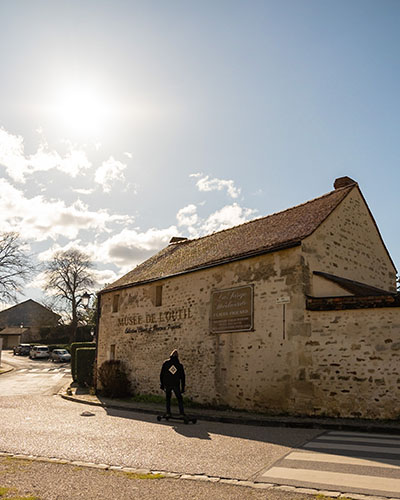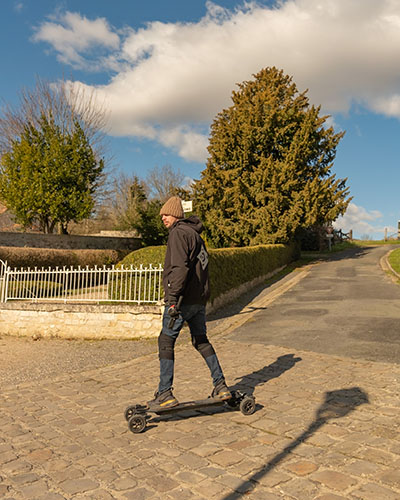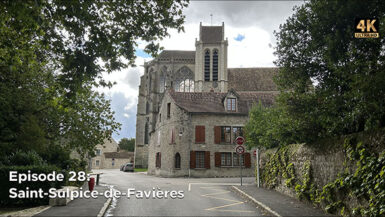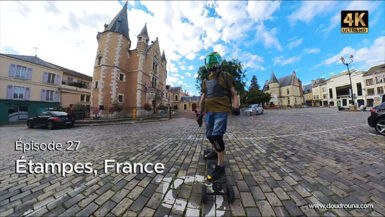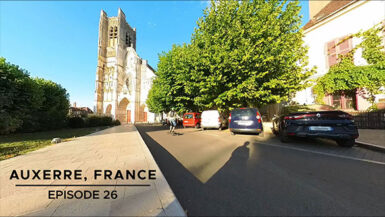Exploring the Charming Village of Wy-dit-Joli-Village on an Electric Skateboard
Experience the joy of riding through the picturesque village of Wy-dit-Joli-Village in France on an electric skateboard. Discover its historical significance, admire the beautiful houses, and visit the renowned landmarks including the enchanting Notre-Dame-et-Saint-Romain Church and the fascinating Tool Museum.
Embark on an exhilarating ride through the enchanting village of Wy-dit-Joli-Village in France. As I glided on my electric skateboard, I immersed myself in the serene beauty of this hidden gem. From exploring the historic streets to encountering magnificent houses, my journey through Wy-dit-Joli-Village was a true delight. Join me as I recount the rich history, distinctive landmarks, and the unique attractions that make this village so captivating.
The Origin of the Village’s Name: Wy-dit-Joli-Village, affectionately known as the “joli Village,” carries a fascinating tale behind its name. Legend has it that during a hunting expedition in 1590, King Henry IV, captivated by the village’s charm, exclaimed, “Mais quel est ce joli village?” (“But what is this lovely village?”). Alternatively, some sources suggest that the term “joli” may have originally had a pejorative meaning. In the time of Henry IV, Wy was a small town with rugged streets, making it challenging for horseback and impossible for carriages. When the king inquired about the village’s name while passing through with Gabrielle d’Estrées during a hunt, he is said to have exclaimed, “Ah! le joli village.”
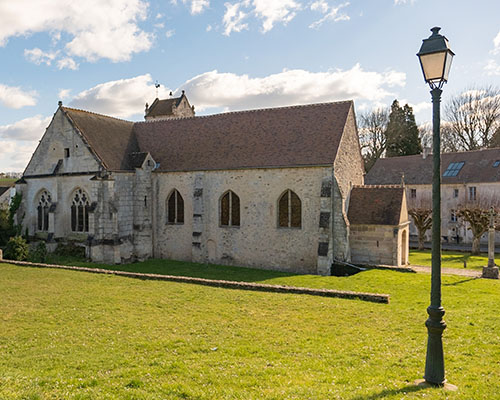
Notre-Dame-et-Saint-Romain Church: One of the village’s most treasured landmarks is the Notre-Dame-et-Saint-Romain Church, located on Rue Saint-Romain. Steeped in history, this architectural masterpiece is believed to have been founded around 625 by Saint Romain, possibly a native of the region. While parts of the church date back to the late 11th or early 12th century, extensive reconstruction took place in the 12th century, resulting in the exquisite Gothic design we see today. The church’s interior features remarkable vaulted ceilings, intricate column bundles, and finely crafted capitals, showcasing exceptional craftsmanship. Adjacent to the church stands the ancient cemetery cross, a classified historical monument since January 3, 1946. This 15th-century cross displays intricate carvings of Christ on one side and the Virgin Mary on the other, while its unique octagonal shaft adds to its allure.
The Tool Museum: Nestled on Rue de la Mairie, the Tool Museum is a true testament to the rich cultural heritage of the Vexin français region. Curated over the years by Claude and Françoise Pigeard, this museum houses a vast collection of traditional tools and utensils that were once integral to the arts and popular traditions of the area. Additionally, the museum’s basement holds the fascinating remains of ancient Roman baths. Explore the heating room, the warm chamber with a limestone bathtub, the tepidarium, and the cold pool as you delve into the history of ancient bathing practices. Surrounding the museum, you’ll discover inviting and tranquil gardens adorned with a variety of plants and flowers, adding to the overall charm of the venue. Today, the Tool Museum is under the ownership of the Val d’Oise Department Council and welcomes visitors throughout the year.
Riding through Wy-dit-Joli-Village on my electric skateboard was an exhilarating experience filled with awe-inspiring sights and a sense of tranquility. As I explored the historic streets, marveled at the architectural wonders. Discover more of my thrilling adventures on an electric skateboard by exploring my previous and upcoming episodes. Join me as I explore new destinations, uncover hidden gems, and share the joy of riding through captivating locations. Stay tuned for more exhilarating experiences in the world of skateboarding and beyond. Happy riding!
Previous episode Next episode


